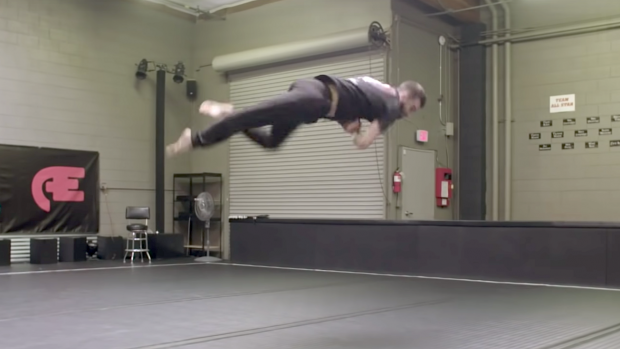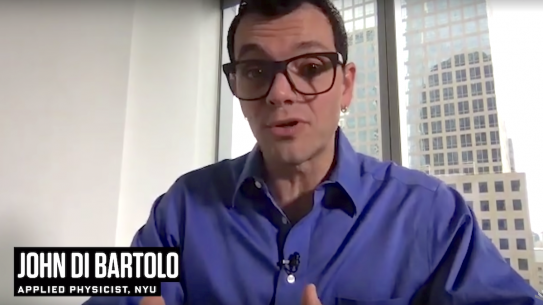“Tricky” doesn’t even begin to describe it
NYU Tandon physics lecturer explains the science behind an extreme sport

Tricking — a sport that combines gymnastics with martial arts and dance techniques — may appear to break the laws of physics, however, Senior Lecturer John Di Bartolo explains in a Wired interview how that's not the case.
If you’ve ever watched the sport known as “tricking” — an edge-of-your-seat combination of martial arts, gymnastics, and break dancing — you’ve probably had moments of not believing your own eyes. Surely the human body was not designed to carry out the high-altitude spins, flips, and twists that go into an impressive tricking routine. How can a person seemingly defy the fundamental laws of physics to devise a live routine that looks like it could only be the product of Hollywood computer-generated imagery or skilled film editing?
John Di Bartolo, a senior lecturer in NYU Tandon’s Department of Applied Physics, explains that practitioners of tricking are not, in fact, defying the laws of physics: they’re taking advantage of them. Even if they are not familiar with scientific terms like torque, inertia, or angular velocity, these athletes are drawing upon the physics of body movement to design their tricks and wow their audiences.
Di Bartolo recently spoke to a reporter from Wired to analyze how a handful of tricking experts have pulled off the uber-challenging quadruple corkscrew — a move that involves completing a backflip before rotating four full times in midair. He explained that before launching themselves off the floor, a tricker must gain a large amount of angular momentum — a quantity that is a product of a moment of inertia and angular velocity. Once in the air, a tricker can further increase their angular velocity by decreasing their moment of inertia, just as figure skaters do when they pull their arms close to their bodies to increase their rate of spin. Unlike skaters, however, who spin only along a straight axis, trickers can shift the axis of rotation — even mid-trick — by moving in what Di Bartolo calls asymmetrical, unconventional ways, such as shifting one arm or leg instead of both.
The few elite athletes who have successfully performed quadruple corkscrews admit that it took them years to gain that level of expertise and predict that it would probably take several more to master a quintuple. Di Bartolo wouldn’t rule out the possibility of achieving five midair rotations one day — not in spite of the immutable laws of physics but because of them.





